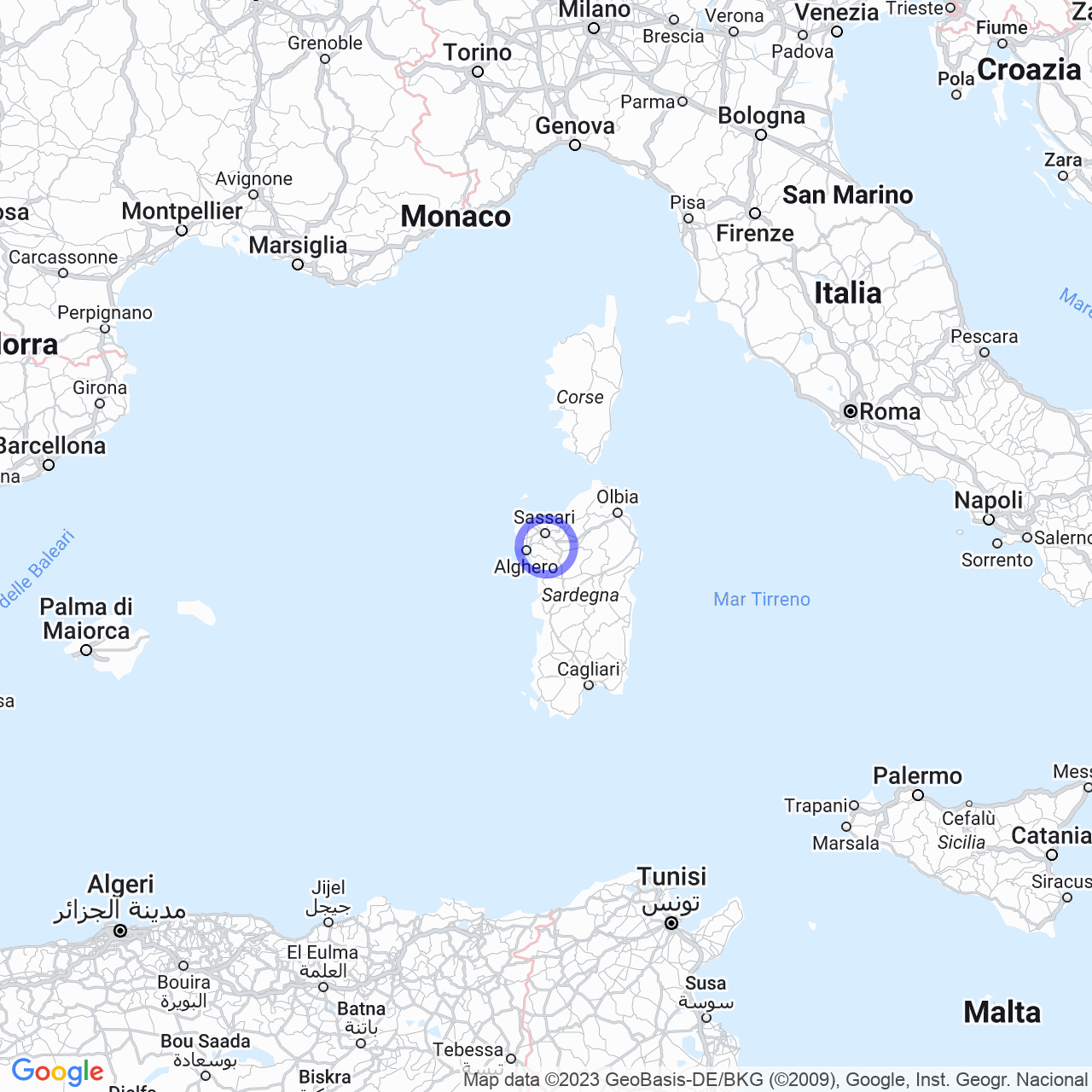Ittiri
Discovering Ittiri: a town between nature and history
Ittiri is a municipality in the province of Sassari, located in the Coros region of Logudoro in Sardinia. The town has about 8,000 inhabitants and is located at 450 meters above sea level. The territory is characterized by plateaus made up of trachytic and basaltic rocks and crossed by valleys for cultivation.
Exploring the territory
Ittiri is located in an area that is very exposed to west and northwest currents, which make the climate typically Mediterranean. The city is surrounded by mountain ranges, including Mount Torru, Mount Uppas, Mount Jana, Mount Unturzu, Mount Alas, Punta S'Elighe Entosu, and Mount Lacusa.

The history of Ittiri
Ittiri has a long history that includes various testimonies of the pre-Nuragic period of Sardinia and numerous nuraghi scattered throughout the area. In the Middle Ages, the town was part of the Torres jurisdiction, in the Coros curatorship. In 1259, with the fall of the jurisdiction, Ittiri came under the authority of the Genoese family of Doria and the jurisdiction of Arborea. Subsequently, the city came under the dominion of the Crown of Aragon. In 1541, Ittiri was united with Uri and formed a barony, granted to Bernardo Simon.
During the 17th century, the town was hit by two epidemics of the plague, which caused the death of many people. In 1770, the barony was transformed into a county and granted as a fief to the Ledà, which was redeemed in 1839 with the suppression of the feudal system.
Discovering the symbols of Ittiri
The coat of arms and the gonfalon of Ittiri were granted by decree of the President of the Republic in 1993. The coat of arms is a semitroncato party: in the first partition, there are marsh reeds, which recall the name by which Ittiri was previously identified. In the second partition, there are three wheat spikes that symbolize agricultural activity and the main local product. In the third part, there is a bearded man who is believed to be a pilgrim or Comita, Judge of Torres, founder and benefactor of the abbey of Paulis, or Gonario II of Torres, a pious judge, pilgrim in the Holy Land.
Things to see in Ittiri
Ittiri is a city rich in history and nature, offering many attractions to visit. Among the main ones, there are the Archaeological Museum, which preserves numerous artifacts of Nuragic and prehistoric cultures, and the Church of Santa Maria del Regno, built in the first half of the thirteenth century.
Don't miss the visit to the Nuraghe Santu Antine, located a few kilometers from the city. The nuraghe, one of the largest and best preserved in Sardinia, was built around the 16th century BC and consists of a central tower surrounded by numerous smaller towers, courtyards, and corridors.
Another interesting place to visit is the archaeological area of Monte Baranta, a vast area that includes the vestiges of an ancient Nuragic city, as evidenced by the remains of walls, houses, and public buildings.
Events and traditions
Ittiri is a city that boasts many traditions and events. Among the most famous is the carnival, which takes place during the Carnival period and includes a parade of traditional Sardinian masks, such as Mamuthones and Issohadores.
Another highly anticipated celebration is that of the Holy Trinity, the patron saint of Ittiri. The festival takes place on the penultimate weekend of July and includes a procession of the Saint's simulacrum through the streets of the town.
Ittiri's cuisine
Ittiri has a very ancient culinary tradition, rich in typical dishes of Sardinian cuisine. Among the most famous dishes is the Gallurese soup, a dish made with bread, pecorino cheese, and meat broth.
Another typical dish is the porceddu, a roasted piglet accompanied by potatoes and vegetables. Finally, the carasau bread cannot be forgotten, a thin and crispy flatbread typical of Sardinia.
Conclusions
In summary, Ittiri offers visitors a unique combination of history, nature, traditions, and gastronomy. The beauty of the surrounding territory, with its mountain ranges and valleys, makes the town an ideal place for nature lovers. The millennial history of Ittiri, evidenced by numerous archaeological artifacts scattered throughout the area, is another good reason to visit this town. Lastly, the local cuisine, with its typical dishes and local products, cannot fail to be appreciated by foodies around the world.
